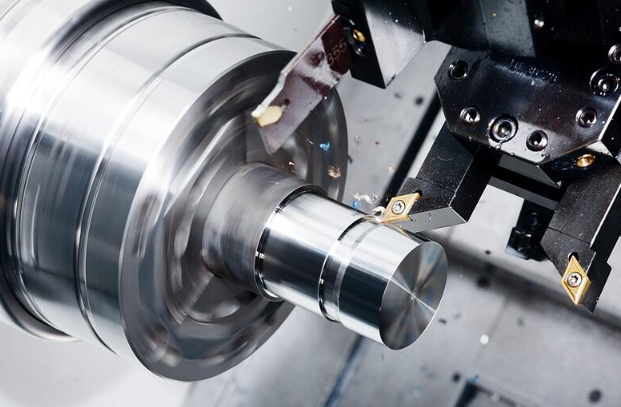Machining or metal cutting is a material reduction manufacturing process, which is mainly used to remove unnecessary materials from the workpiece to improve dimensional accuracy and tolerance. Over the years, a variety of processing technologies have been developed to effectively process more kinds of materials in countless ways. In a broad sense, such processes can be divided into traditional machining processes, abrasive finishing processes and non-traditional machining processes. Next, we will introduce in detail the differences between CNC turning and CNC milling commonly used in manufacturing processes.

CNC Turning & Milling
Traditional machining is a manufacturing process that uses wedge cutting tools to cut excess material from preformed blanks in the form of chips to provide the desired shape, size, and finish. The current manufacturing processes include turning, thread processing, end face processing, centering, drilling, boring, milling, broaching, reaming and tapping, etc.
Both turning and milling processes are conventional processing operations. However, each of them has different capabilities, so they are suitable for manufacturing different features by removing materials from the workpiece. Turning technology is widely used to generate cylindrical or conical surfaces. The milling process can be used to produce flat or sculpted surfaces. It uses multi-point cutting tools, usually CNC milling machine will have dozens of cutting edges. In addition, there are many differences between turning process and milling process. The differences between the two processing processes will be described in detail below.
Differences Between CNC Turning and Milling
1. Generated surfaces and features: CNC turning is mainly used to generate cylindrical or conical surfaces, independent of the shape of raw materials. Any feature generated by this process must be rotationally symmetric. Generally, it can be used to manufacture axisymmetric parts, such as cylindrical or tapered shafts, stepped shafts, tapered objects, increasing the diameter of internal holes (no holes can be produced), cutting cylindrical grooves, etc. In contrast, milling can be used to generate surfaces in any direction of the plane as well as contour surfaces. In milling, we usually encounter features such as groove, keyhole, groove, wall, fin and web.
2. Machine for operation: In the field of metal cutting, machine is a kind of mechanical equipment of a specific category, which performs different processing operations on different machines. However, some machine tools can perform many similar operations. The turning process is carried out in a multifunctional machine tool called a lathe. This is mainly a horizontal axis machine tool (the spindle is horizontal); However, vertical spindle lathes, especially bench type lathes, can also be used. The milling process is carried out on a CNC milling machine, which can have a vertical axis or a horizontal axis (both are common).
3. Single point and multi-point tools: Cutting tools (or tools) may contain only one or more active cutting edges, which can participate in material removal during machining. According to the number of cutting edges, tools can be divided into single point tools or multi-point tools. Turning operations are performed using a tool called a single point tool. Therefore, only one main cutting edge can actively participate in shearing or material removal. In contrast, milling cutters may contain dozens of cutting edges, sometimes even more. It is obviously a multi-point tool because more than one cutting edge is involved in cutting or removing material at the same time.
4. Cutting movement and feeding movement: There are two relative movements between the workpiece and the tool, and their simultaneous action will lead to the shearing of the material layer of the workpiece. These two are called main motions because most of the cutting power is absorbed by them; However, there may be other secondary motions based on the features or surfaces to be generated. The function of the machine tool is to apply this relative motion in the desired direction at a predetermined rate.
In the turning process, the workpiece rotating at a fixed cutting speed actually provides the required cutting motion, while the motion of the tool holder (on which the tool is firmly mounted) provides the required feed motion. In the milling process, the opposite is true, the cutting motion is provided by the tool rotating at a fixed speed, while the feed motion is provided by the mobile workbench (on which the workpiece is mounted).
Through the detailed introduction of turning process and milling process, we can learn that turning process and milling process are both conventional processing operations. However, each of them has different capabilities, so they are suitable for manufacturing different features by removing materials from the workpiece. Turning technology is widely used to generate cylindrical or conical surfaces. The milling process can be used to produce flat or sculpted surfaces. In addition, there are many differences between turning process and milling process.